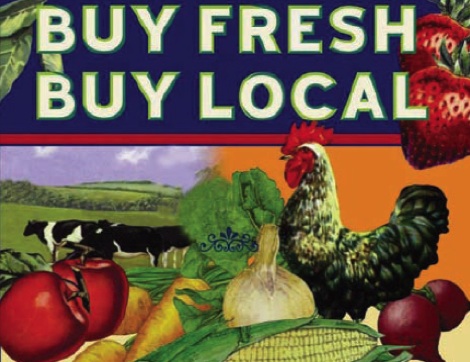
By Christopher J. Petherick –
There’s good news for the Christmas season: New economic indicators show that Americans are increasingly choosing locally produced food and other products over those made thousands of miles away.
This not only helps local farmers and shop owners, but the entire community benefits. Studies show that money spent locally tends to stay locally, as opposed to purchases made at megabrick-and-mortar stores like Walmart (formerly called Wal-Mart) or Target, where a large part of your money can end up going as far away as China.
A new report by the U.S. Department of Agriculture (USDA) shows that sales of locally grown foods either sold directly from the farm or via grocery stores and restaurants are expected to top $7 billion in 2011. That amount is nearly double the figure for 2008. To the astute observer, the signs are everywhere.
Farmers markets and roadside stands across the country are reporting booming sales. In rural communities, more and more farmers are opening their own on-farm stores to sell their own locally produced wares. Even the big boys are getting in on the act. Last year Walmart spent millions of dollars on a marketing campaign that promoted the sale of local vegetables and produce at its megastores.


This all spells good news for America’s struggling family farms. For the past few decades, U.S. farmers have been forced to sell directly to a few multinational distributors like ConAgra at prices that are often below their costs.
The USDA reports that the number of farms now selling directly to consumers has more than doubled from an estimated 86,000 in the early 1990s to about 136,000 today. Likewise, reports the USDA, the number of farmers markets has grown from 2,756 in 1998 to 5,274 in 2009.
And perhaps the best news of all is that the largest number of farms that sells directly to consumers also tend to be smaller family-owned farms. The USDA study found that farmers who reported less than $50,000 in gross annual sales made up 81 percent of the farms that reported local food sales. Medium-sized farms with $250,000 or less in revenue came in a distant second with only 17 percent.
So this year, when you’re shopping for the family get-together on Christmas and New Years Day, why not go out of your way to buy locally. A listing of small farms, farmers markets and other local food sources in your area can be found on the LocalHarvest Web site.
As stated on its Web site, “LocalHarvest is the #1 informational resource for the Buy Local movement and the top place on the Internet where people find information on direct marketing family farms. We now have more than 20,000 members, and are growing by about 20 new members every day.”
Click here to visit the Web site or contact LocalHarvest directly at (831) 515-5602.


